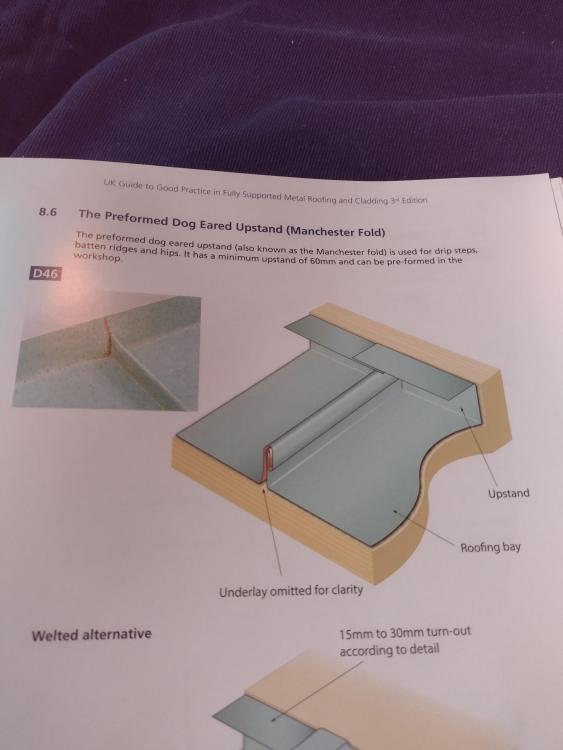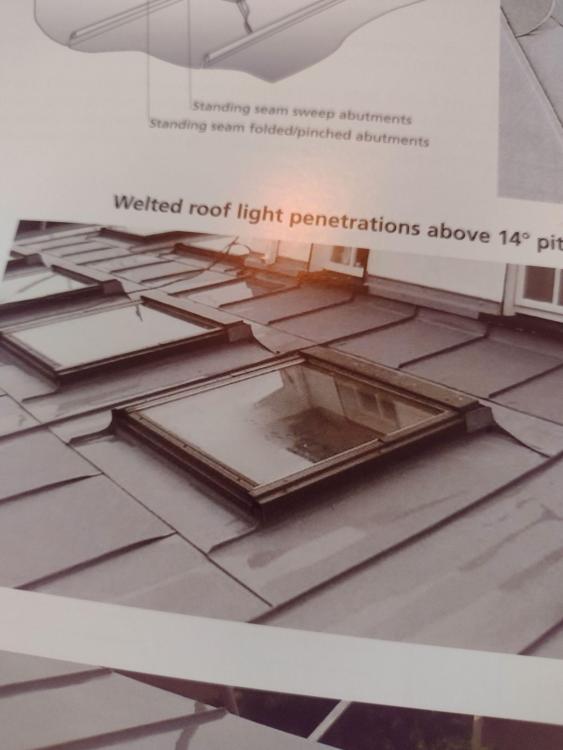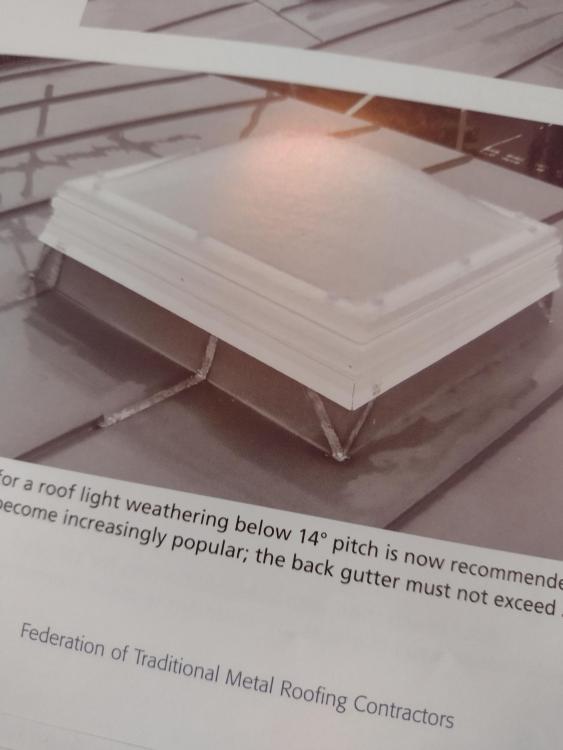Leaderboard
Popular Content
Showing content with the highest reputation on 03/12/22 in all areas
-
Easy to do, if you take your your time. Bed the cill on to a wet mortar mix with a strip of DPC stapled to the bottom of the cill. This takes up any uneven brickwork. For the sides, just use these to fix the frame to the brickwork with packers either side of each screw. Measure the frame for square across the diagonals and check it still closes and locks before you tighten too much. Try and get packers behind hinges too if possible. For the top, I would make up a frame of CLS and then add a middle brace and screw it to the top of the door and to each side with a spare frame fixer. Infil with some insulation - doesn’t matter what but PIR or EPS would be best, then fit a front panel made of 9mm ply and glue and screw it all the way round. You can add cover strips or detail on the edges after. Same on the inside, you’re looking to cover 200mm which is nothing really. Once it’s all leveled and plumb, round the edge carefully with some foam and then leave to dry, trim back and a bead of sealant.2 points
-
Have a read through my blog @Jeremy Harris and others. You have Slab losses, wall losses, fenestration losses, roof losses, air exchange losses, and thermal bridging losses. You need to design a house with a sensible balance to optimise so that you get a delta £s invested on any one that gives the best drop in heat losses and therefore delta £s in running costs. As with my and Jeremy's calcs, you don't need anything too sophisticated like the PHPP model which as so many terms and adjustments that it is intractable to make trade offs. With TF, as Dave says 8×2 + an extra layer of slab insulation can get a U-value of 0.12; slab and roof same ballpark; decent triple glazing under 1.0. Once you are in this domain 40+% of your heat losses are from air exchange if you have a pretty airtight house and MVHR; up to 85% if you use poor quality conventional build techniques and no MVHR, so you need to make your house airtight by design. The MVHR means that it always smells fresh because you are continually replenishing with (reheated) external air. If doesn't matter how good the nominal design is if your builder doesn't bother putting in the roof or wall insulation where you can't see -- as many have discovered with a FLIR camera once they've moved in. Ditto thermal bridges on steel I-beam crossing the warm / cold divide. The single biggest cost component in our house was the natural local stone skin -- which was a planning requirement, as well as looking nice. As to the near-passive performance, adding this was maybe 15% of the cost of the skin, but then again I use a 3kW inline heater to heat my water-based UFH system and our internal temp is ~ 22½°C everywhere, all year round. Putting the water-base UFH loops in the slab cost ~$2K and no other CH installation, rads on walls etc needed. (The 22½°C is because a pair of OAPs like it that way.)2 points
-
@smart51 rule of thumb is that it costs approx 15% more per square/m to build a bungalow compared to a normal 2 storey house2 points
-
Used a local supplier for all our windows and doors they are not one of the branded names that get mentioned a lot on here but we are happy with them.1 point
-
1 point
-
Who did the detailing on the external corners and upstands for your dormers as they're incorrect and leave you exposed to weathering. . Ideally, you're going to need some flashing over the corners and upstands to resolve this. Here are the recommended details together with examples of upstand and welted/soldered corners:1 point
-
I understand where you are coming from and you clearly have to guard against potential poor workmanship, but IMO that's a matter quality control and not a cause to accept that you've lost control of your subs before you begin.1 point
-
Many thanks Nick, this forum never fails to amaze me, so many kind folk ready to share and help. I am in my 83rd year but determined to do my bit for my grand children and theirs. We know the financial investment we have made over the past 5/6 years will not be recovered in my life time but we will continue as long as possible to reduce our carbon footprint. We have found a local heating engineer/plumber who is G3 qualified so will be seeking his advice next week re cost, (and potential disruption) of an UVC installation as you describe. We have a retrofitted Solax X1-AC inverter which converts AC back to DC for the battery charging. Not sure how sophisticated the Solax X1-AC is but I will ask the people next week who supplied and installed it.1 point
-
We used this on ours and works perfectly - has withstood jet washing twice now - https://www.amazon.co.uk/Jointing-Compound-Stone-Joint-Mortar/dp/B010V0U5MG1 point
-
Might have been this stuff. https://www.everbuild.co.uk/products/landscaping/jointing-compound/sika-fastfix-all-weather/1 point
-
You need a VESA tv desk stand. some examples https://www.ebay.co.uk/sch/i.html?_from=R40&_trksid=m570.l1313&_nkw=vesa+tv+stand&_sacat=0 Check the mounting hole spacing and weight limit before buying. Use this instead of the stand that came with the tv and you can adjust the height to fit the sound bar underneath.1 point
-
1 point
-
If you budget at around £1500-2000 m2 build cost on good ground Plus all the usual fees Buying - Surveys Conections etc1 point
-
It could be the design allows for a single story construction on the allotment side and a 2 story construction on the housing side.. With a big sloping roof...1 point
-
Indeed. Watching my old man in his house on the nanny cam. Leaning down behind the sideboard to reach the TV socket right down low. Good chance of over balancing.1 point
-
I'm getting older, and prefer sockets that I plug into at a height where I don't fall down trying to reach them and that's why ours are between 450mm and 1200mm in our "forever home".1 point
-
I would add that design is the bigger factor to cost rather than size. I think if I had changed my design, different roof, less weird angles, different materials. I think I could build my place for £100,000 less than it’s going to cost. Square box, red tiled roof, plastic facia and gutters. Probably why the developers stick to a certain design.1 point
-
1 point
-
Cost per m2 will always be more for a single story compared to two story Apart from taking up more ground You are increasing the size of your foundations One of the more expensive parts of many builds We spent more than a quarter of our entire budget getting out of the ground on our previous build1 point
-
No not Joking just pointing up a possibility; That we are actually a function of our socialisation and as such we will naturally do a lot of things that we are programmed - by our socialisation, to do. Its called the ideological state apparatus it works to get things done so coercion using the repressive state apparatus does not have to work so hard. So what we, none of us really and including those who proport to 'make the rules', can be certain that the way we are is not already the way 'they' want us to be and have therefore read the books (etc) 'they' (Perhaps better styled 'it') wanted us to. This in turn implies that any individual's stance on any matter is a function of the emotional and intellectual baggage they (we) have accumulated and that baggage forms the foundation for our world view. Leaving it in left luggage is no easy matter but it is possible to work knowing it is there, perhaps by asking 'what is it about the way I got here that is limiting (controlling if you will) my ability to see what is really going on around me'. Luckily, at least from my perspective - all others are available, individuality (diversity might be a better gestalt) is a good thing and in any discourse one needs to increase the strength of one's argument rather than increase the volume with which it is dispersed. Things like the 'death of nuance', 'cancel culture', increased tribalism all, in my view, are contributing to reduced individuality and this may, I feel - I have no evidence, be changing us in ways we might come to regret. Just a thought. PS Sorry, for GESTALT read: "something such as a structure or experience that, when considered as a whole, has qualities that are more than the total of all its parts:" (Cambridge English Dictionary - https://dictionary.cambridge.org/dictionary/english/gestalt 12.03.2022)1 point
-
General rule I've heard before is an additional floor to the ground floor costs approx 50% less than the ground. A bigger factor tho is economy of scale, I.e. the bigger and simpler, the cheaper. And how quickly to can build it so inflation and increasing costs don't drive it up too much.1 point
-
Crikey, it's a matter of determining how long a piece of string is... Broadly, the larger the floor area the more floors it justifies. At a guess, from viewing developers catalogues for one off houses with prices, < 120m2 for a single story, 120-240m2 for 2 story etc etc. Obviously if you get a superb price for foundations and roofing it sways the deal.1 point
-
Assuming there is a room in the roof or might be in future.. Warm roof has the insulation above the rafters (eg rafters are on the warm side). Cold roof has the insulation between or below rafters (eg rafters are on, or partly on, the cold side of insulation). By that definition a warm roof is usually deeper overall. Cold roof has options... a) Ventilated void - if the membrane is NOT vapour permeable there must be a 50mm ventilated void below it. Typically the membrane drapes/sags 25mm into this void to prevent water being trapped above tile battens. b) No void and counter battens - if the membrane is vapour permeable you can reduce or eliminate the void. If you eliminate the void by fully filling between rafters you should add counter battens on the outside to raise the tile battens off the flat membrane and allow water to run down. If the membrane is in contact with insulation (eg Cold roof with no void/drape) then you should use a membrane approved for that as not all are. A room in the roof design (aka warm loft) can have any of the roof types above. I would go with cold roof b) as the counter battens add 25mm but you avoid the 50mm void. So overall this saves you 25mm for a given thickness of insulation. If height isn't a problem I would build a warm roof with as much of the insulation above the rafters as possible. If you want to build a hybrid (some above and some between) then you must get an Interstitial condensation risk analysis done. I believe the recommended ratio 2/3rds above and 1/3 between. If you put more between the rafters that "moves" the top of the rafters nearer the cold side increasing condensation risk.1 point
-
I think we will soon be seeing how quickly that can happen in Germany 🙂 . Though I am told there is capacity to use the European gas grid to mitigate in the meantime. F1 point
-
Hi @oldkettle I apologise if you feel offended. That was not my intention. However, honestly the general public do not always make the right decision, and nor do the government. And now to Covid. I can only get covid from another human being (directly or indirectly) so I would appreciate it if people tried to protect me from the disease. I am not impressed when other people intentionally threaten my health and possibly my life.1 point
-
What I really like about US constitution is it lists right that can't be taken away from people because it's not the bloody state, not any president or a prime-minister who gave these rights to people. If the electoral system fails to deal with what people believe is a real problem sooner or later it will blow up. It may be a populist party, a referendum or worse, but people need to know they are not completely ignored. Losing fairly is not the same as being ignored. Specifically with energy, it may well be a scientific break-through will solve it all for us and I hope it will, but right now the picture is bleak.1 point
-
The mantra on this site is insulation, insulation, insulation, especially with the energy crisis looming. Some here have virtually no heating because their insulation is so good, and you only buy insulation once. My heating comes on a few times fir a couple of months only.1 point
-
Further Update: so spoke with Surveyour and he really helped to put my concern at ease. He said the issues are most definitely related to the drainage. Further intrusive investigation required has already been done in the form of Geo Technical Survey. So in summary fixed the drainage may be £1500.00 outlay plus rebuild the floor slabs and utility area wall at approx cost of 10k. Then involve the local architect for the build upward who will employ the relevant engineer to assess the strenght of existing foundation. Then we can decide if it's a rebuild altogether or build up. I am thinking the conversation with surveyour is on a positive so we will continue with our purchase...so just waiting for the probate to come through.1 point
-
Hi and welcome. My view, 6*2 frame is not wide enough to get enough insulation. We built with an 8 * 2 frame on the outside and then a further 100mm of external insulation around the outside of the frame. Remember an outer blockwork skin is just a rain shield, it adds very little to the insulation.1 point
-
1 point
-
It does. Roughly speaking its 300k for everything up to second fix, then 125k for second fix, which is broken out: ASHP (after 5k grant) £6,200.00 MVHR £7,000.00 Second Fix Joinery £16,500.00 Porch £3,000.00 Kitchen £35,000.00 Second Fix Electrics & plumbing £11,000.00 Landscaping and gardens £20,000.00 Flooring £9,000.00 Tiling £5,000.00 Decoration £5,000.00 Sanitaryware £7,000.00 The main ambitious bit is probably second fix electrics which is probably on the low side. Kitchen is designer high spec, completely outsourced to a subcontractor kitchen specialist. Bathroom second fix is through plumber, and we will be purchasing sanitaryware (so no Bathroom designer or subcontractor for that). Bathrooms are mid range (Grohe or Hans Grohe for taps, Roccia sanitaryware). Flooring is subcontracted out (LVT downstairs @ £60 sqm, Carpets elsewhere at £33.50 sqm).1 point
-
@IndySo below are the prices per sqm and sqf as per our quote and what we are working to. I've worked out the total size of the house floors (walls included) which is the gross external, then the gross internal (everything except the external walls, so these includes studwork and eaves voids on 2nd floor) then our final actual usable internal floor space (which excludes studwork and eaves storage on 2nd floor): Sqm Gross External Gross Internal Usable internal Area Total size (sqm) 319 279 262 Total size (sqf) 3433.716 3003.156 2820.168 Total build cost (per sqm) £1,337.93 £1,529.75 £1,629.01 Total build cost (per sqf) £124.30 £142.12 £151.341 point
-
Stairs going in now, upgraded to oak in the end as thought it was worth spending an extra 1k in this area. Limestone tumbled floor now complete in hall, kitchen and utility. These have really hurt the budget and taken up all of our PC sum for flooring. 22mm thick so lots of extra grout etc. Now it’s down I think it was well worth it, it’s much lighter in person and gone with a matt sealer. Downstairs toilet area now formed, quite small but enough for a toilet and small wall and slim vanity unit Our slush fund is now gone which was 20k so really need to try and stick to PC sum to completion.1 point
-
My main concern with 3 phase in a house would be how the phases are safely split across loads. It could be potentially iffy to have some outlets on one phase and some outlets on another, for example. Keeping the 3 phase supply for specific 3 phase loads seems the best approach, with the house domestic loads (lighting, outlets etc) all coming from the same single phase. Balancing doesn't usually matter with domestic loads, as they won't be massive and there is no means of properly balancing existing domestic supplies, anyway. The sort of loads that could run from a dedicated 3 phase supply might be three PV systems of up to 16 A each, maybe a 3 phase car charge point (probably not something that's going to be around in the longer term for AC charging, though), 3 phase garage equipment, perhaps, or maybe a 3 phase heat pump (have to be a pretty massive one to need a 3 phase supply, though). Power factor is not yet something that the DNOs seem to bother about for domestic loads, but that seems likely to change sooner or later, as the new metering standard has provision for kVA billing. Right now there has been a statement that there is no intention to roll out kVA billing to domestic customers, but that then begs the question as to why it was included as an option in new meters. Some household loads have a pretty poor power factor, as things like switched mode power supplies and inverter drives have become more popular. Sooner or later I suspect that there may be a need to consider PF correction on domestic supplies.1 point
-
It's mentioned somewhere in the Scottish regs it might be different in other places. Chances are BC won't see most of the socket heights until final inspection. He is not going to make you drag the washing machine out to check the socket behind it is at regulation height. And if you have a tv mounted high on a wall, is he really going to argue that the cable should be hanging down from it and plugged into a 1200mm high socket rather than a socket hidden behind the tv? If he was going to be that stupid, I would remove the tv, fit a blank plate in place of the socket and invite him back. There is no cure for stupid.0 points
-
There were there for less than 3 minutes… I should be pleased there are no issues I suppose but still, I’m in the wrong game $$$0 points


















.jpeg.310cd569fe6381b28502fd27a0e7784f.jpeg)